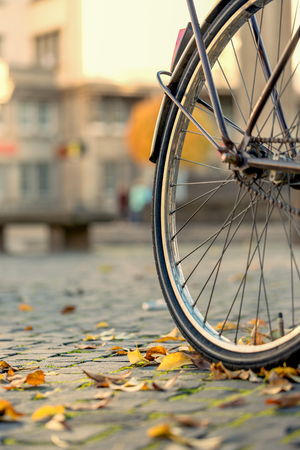Introduction to Accessible Urban Walking in the UK
In recent years, the emphasis on inclusivity and accessibility within urban environments across the UK has grown significantly. Cities such as Manchester and Birmingham are increasingly recognised for their commitment to making urban spaces more welcoming for everyone, including those using wheelchairs or with limited mobility. This shift reflects a broader societal understanding that accessible city walks not only enhance quality of life for disabled individuals but also enrich the urban experience for families with prams, elderly residents, and visitors alike. As awareness rises, local councils and community groups are prioritising the development and promotion of wheelchair-friendly routes, ensuring that iconic sights, green spaces, and cultural landmarks are within reach for all. The following guide explores favoured urban walks in major UK cities, highlighting how thoughtful design and ongoing advocacy are reshaping our towns into truly inclusive destinations.
Manchester: Wheelchair-Friendly Routes and Local Highlights
Manchester stands out as a city committed to accessibility, offering a range of wheelchair-friendly routes that weave through its urban landscape. Whether you are a local or a visitor, the city’s infrastructure ensures that everyone can enjoy its vibrant atmosphere and rich cultural heritage. Below, we examine some of Manchester’s best accessible walks, highlighting key parks, renowned cultural sites, and practical travel advice for those exploring the city on wheels.
Top Wheelchair-Accessible City Routes
| Route Name | Highlights | Distance | Surface Type | Facilities |
|---|---|---|---|---|
| Castlefield Urban Heritage Park Loop | Historic canals, Roman fort ruins, waterside cafés | 2 miles (3.2 km) | Paved paths, smooth towpaths | Accessible toilets, nearby parking |
| Piccadilly Gardens to The Whitworth | Bustling city centre, Manchester Art Gallery, Oxford Road corridor, university landmarks | 1.5 miles (2.4 km) | Pavements with dropped kerbs throughout | Café stops en route, step-free gallery access |
| Heaton Park Accessible Trail | Lakeside views, ornamental gardens, animal centre | Up to 4 miles (6.4 km) | Tarmac paths, gentle gradients | Changing Places toilet, mobility scooter hire |
| The Quays Cultural Walk | The Lowry arts centre, Imperial War Museum North, waterfront promenades | 2.5 miles (4 km) | Smooth paving throughout | Cafés and accessible facilities at venues |
Cultural and Recreational Highlights Along the Way
- The Whitworth: Fully accessible art galleries with step-free entrances and accessible washrooms.
- Heaton Park: One of Europe’s largest municipal parks, offering all-terrain wheelchairs for hire.
- The Lowry: State-of-the-art theatre complex with hearing loops and accessible seating.
- Northern Quarter Street Art: Wide pavements make this creative district easy to navigate for wheelchair users.
Practical Travel Tips for Visitors with Mobility Needs
- Transport: All Metrolink tram stops in central Manchester have step-free access; low-floor buses are widely available.
- Parking: Blue Badge holders will find dedicated bays near major attractions and along most city-centre streets.
- Amenities: Many public toilets in the city are Radar-key operated; Changing Places facilities are available at select locations such as Heaton Park and The Lowry.
- Tactile Paving & Dropped Kerbs: These features are prevalent across the city centre to support independent navigation.
- Assistance Services: Visitor information centres can provide up-to-date details about accessibility at specific sites and offer assistance if needed.
A Leader’s Note on Inclusive Exploration
Manchester’s commitment to accessibility is evident not only in its well-maintained pathways but also in the inclusive spirit fostered by its community. With thoughtful planning and local support, wheelchair users can fully immerse themselves in the city’s dynamic culture and green spaces—ensuring memorable experiences for all who visit or reside here.

3. Birmingham: Exploring the City’s Barrier-Free Walkways
Birmingham stands out as a beacon for accessible urban exploration, offering a variety of well-maintained, step-free routes that invite wheelchair users and those with limited mobility to experience the city at its finest. Whether you are drawn to the vibrant city centre or the calmness of green spaces, Birmingham’s walkways promise both convenience and enjoyment.
City Centre Landmarks
Start your journey at Centenary Square, a focal point renowned for its level pathways and proximity to major attractions such as the Library of Birmingham and Symphony Hall. The square itself is paved with smooth surfaces and includes dropped kerbs, ensuring seamless access throughout. From here, you can easily follow signed routes towards Bullring & Grand Central, where lifts and automatic doors are standard features, making navigation straightforward even during busy hours.
Accessible Amenities Along the Way
Throughout these central routes, accessible toilets and Changing Places facilities are available in key locations including New Street Station and the Bullring shopping complex. Cafés and restaurants along Broad Street frequently offer step-free entrances, height-adjustable tables, and staff trained in accessibility awareness—just ask if you need assistance.
Tranquil Green Spaces
For those seeking respite from the city bustle, Cannon Hill Park presents an ideal choice. Its wide tarmac paths meander through gardens and lakesides, all fully navigable by wheelchair. Ample blue badge parking bays are located near main entrances, while accessible toilets can be found at the park’s Mac Birmingham arts centre. Similarly, Edgbaston Reservoir offers a circular flat route with clear signage and resting benches thoughtfully placed for comfort.
Planning Your Visit
Birmingham City Council provides detailed accessibility maps online, highlighting step-free routes, accessible public transport stops, and up-to-date information on ongoing works or temporary closures. For peace of mind, it is advisable to check these resources ahead of your visit. The council also operates a Shopmobility scheme in the city centre for those who wish to hire mobility scooters or powered wheelchairs during their stay.
With its blend of architectural grandeur and leafy retreats—all designed with inclusivity in mind—Birmingham remains a model city for barrier-free urban walking experiences in the UK.
4. Expanding Horizons: Notable Accessible Walks Beyond Manchester and Birmingham
While Manchester and Birmingham offer exemplary wheelchair-friendly routes, the UK’s commitment to inclusivity extends well beyond these two urban centres. Exploring diverse cities not only enriches the walker’s experience but also promotes regional appreciation and community integration. Below, we highlight standout wheelchair-accessible urban walks in several key UK cities, ensuring that everyone can enjoy the nation’s vibrant cityscapes.
Accessible Urban Walks Across the UK
The table below provides a snapshot of recommended wheelchair-friendly walks in major UK cities outside Manchester and Birmingham, with details on route highlights and accessibility features.
| City | Route Name | Main Features | Accessibility Notes |
|---|---|---|---|
| London | South Bank Thames Path | Iconic riverside views, cultural landmarks (e.g., Tate Modern, London Eye) | Smooth paths, step-free access, regular accessible toilets |
| Edinburgh | The Meadows & Bruntsfield Links | Expansive green spaces, historic university surroundings | Paved walkways, gentle gradients, ample seating |
| Bristol | Harbourside Loop | Waterfront scenery, museums, cafes along route | Level surfaces throughout, step-free entry to attractions |
| Glasgow | Kelvingrove Park Circuit | Lush parkland, Kelvingrove Art Gallery proximity | Tarmac paths, accessible play areas and restrooms |
Championing Regional Diversity and Inclusion
The expansion of accessible urban walks into additional cities ensures that no region is left behind. For example:
- Leeds: The city centre loop incorporates Millennium Square and the River Aire promenade with dropped kerbs and tactile paving for ease of navigation.
- Liverpool: Albert Dock to Pier Head offers wide boulevards, accessible maritime heritage sites, and step-free museum entrances.
Practical Tips for Inclusive City Exploration
When planning a visit to any UK city for an accessible walk:
- Research official council or tourism websites for up-to-date accessibility maps.
- Check for local transport options with step-free access to starting points.
- Contact visitor centres ahead of time for advice on temporary works or events affecting access.
By seeking out and sharing information about inclusive city walking routes across the country, we foster a more equitable approach to urban exploration—ensuring that everyone can enjoy the best our cities have to offer regardless of mobility needs.
5. Essential Tips and Resources for Accessible Urban Walking
Planning an accessible city walk in Manchester, Birmingham, or other UK urban centres requires careful preparation and awareness of local resources. Below is practical advice to help wheelchair users enjoy urban strolls with confidence and comfort.
Local Support Organisations
Engaging with local disability advocacy groups can offer invaluable guidance on the most accessible routes. In Manchester, Manchester Disabled Peoples Access Group provides detailed accessibility reports and peer support. For Birmingham, organisations such as Birmingham Access Committee and Disability Resource Centre are excellent starting points for route recommendations and up-to-date access information. Connecting with these groups before your walk often yields real-world tips from fellow wheelchair users.
Accessible Transport Guidance
Navigating public transport is integral to a successful urban exploration. Both Manchester and Birmingham offer step-free access at key train stations, including lifts, ramps, and accessible toilets. The National Rail Enquiries website details station facilities across the UK. When using buses or trams, check operator websites like Transport for Greater Manchester (TfGM) or West Midlands Network for low-floor vehicle information and live service updates. Booking assistance in advance is strongly recommended during peak hours or at less-frequented stops.
Useful Digital Resources
A range of digital tools now makes route planning far more straightforward:
AccessAble
This website and app offer detailed access guides for thousands of venues and public spaces across UK cities, including step gradients, door widths, toilet facilities, and more.
Google Maps – Accessible Route Feature
The ‘wheelchair accessible’ route option helps identify step-free paths on public transport networks in both Manchester and Birmingham.
Euan’s Guide
A trusted review platform where disabled people share first-hand experiences of city attractions, parks, shops, and restaurants – an excellent resource for honest accessibility feedback.
General Planning Advice
- Check weather conditions: British weather can be unpredictable; waterproofs are always advisable.
- Bring a companion if possible: While many routes are independently accessible, company can help navigate unexpected challenges.
- Cushion comfort: Long distances on pavements may require extra seating support – consider bringing a portable cushion or backrest.
Conclusion
With robust local support networks, well-maintained transport options, and comprehensive digital resources, wheelchair-friendly urban walking in the UK is increasingly achievable. Thorough preparation ensures you can fully experience the vibrant culture of Manchester, Birmingham, and beyond – one accessible stroll at a time.
6. Conclusion: Fostering Inclusive Urban Adventures
Reflecting on the diverse, wheelchair-friendly city routes highlighted throughout Manchester, Birmingham, and further afield, it becomes clear that universal access is not merely a matter of compliance but a cornerstone of vibrant, modern British cities. Creating accessible urban environments ensures that all residents and visitors—regardless of mobility level—can fully participate in the cultural, social, and recreational life of our communities. These favoured walks exemplify how thoughtful planning, investment in infrastructure, and ongoing dialogue with disabled communities can transform city spaces into welcoming places for everyone. As we look to the future, fostering inclusivity must remain at the heart of urban development across the UK. Such commitment not only benefits those with physical challenges but enriches the collective experience of city living, strengthening community bonds and affirming our shared values of openness and respect. By championing accessibility in both policy and practice, we pave the way for genuinely inclusive urban adventures—where no one is left behind and every journey is possible.

